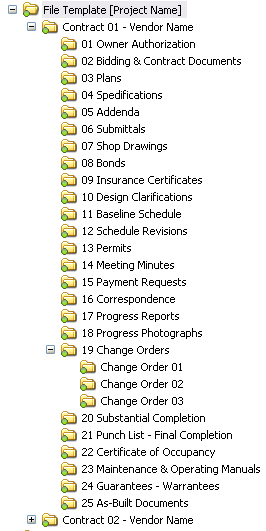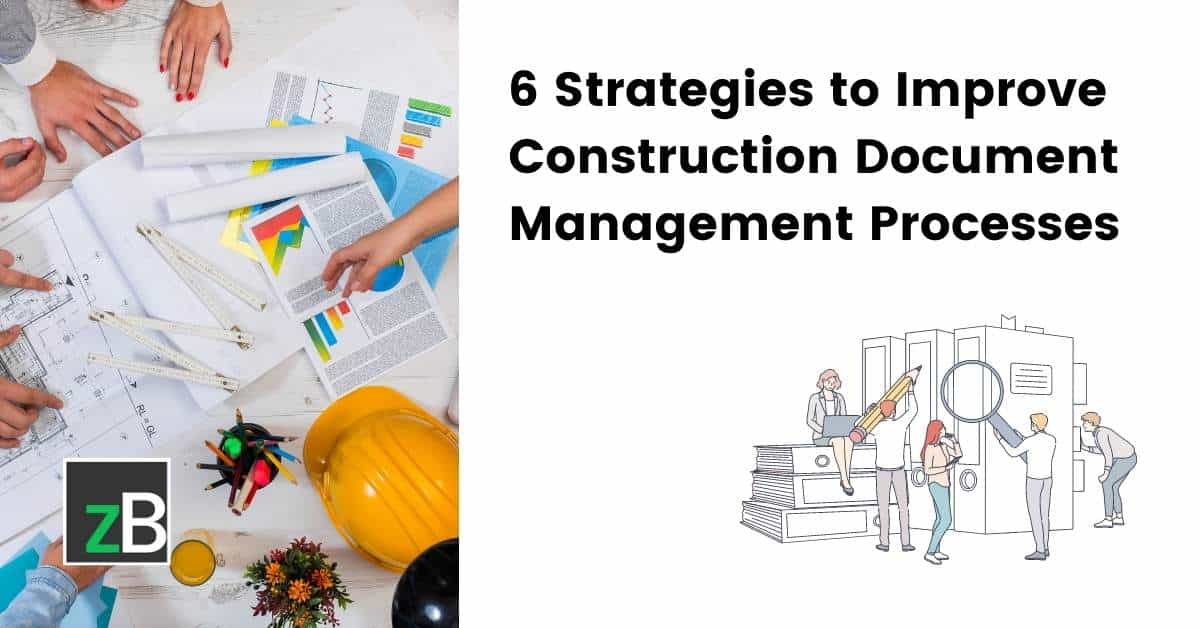Raise Your Job Management: Construction Document Management Equipment You Need
Wiki Article
Enhancing Process Effectiveness: Engineer's Expert Strategies for Building And Construction Document Monitoring
In the world of architectural style and building and construction, the thorough monitoring of papers stands as a foundation for project success. These strategies not just make certain smooth project progression however additionally hold the essential to opening boosted efficiency and precision in the intricate world of building record administration.Secret Record Company Techniques
When managing building and construction files, one of the vital techniques that architects use is developing a efficient and methodical organization system. This system usually involves categorizing files based on their type, such as drawings, requirements, contracts, and permits. By producing clear and unique classifications, engineers can promptly situate details information when needed, saving time and reducing errors in the construction procedure.Within each classification, engineers further organize records by creating subfolders or utilizing numbering systems to represent alterations or versions (construction document management). This hierarchical structure makes sure that one of the most relevant and present details is quickly obtainable while keeping a record of modifications made throughout the job timeline
Additionally, engineers often utilize electronic record administration platforms that use features like keyword search features, variation control, and gain access to restrictions to boost organization and cooperation amongst task stakeholders. These tools improve the paper retrieval procedure, promote real-time updates, and promote smooth interaction, ultimately contributing to the overall success of the building and construction project.
Collaborative Platform Integration
To enhance document management effectiveness in building jobs, architects seamlessly incorporate collective systems to boost interaction and streamline coordination amongst task stakeholders. By leveraging joint systems such as job management software application, cloud-based storage space systems, and communication tools, designers can develop a centralized hub for all project-related records and interaction channels. These systems enable staff member to gain access to, review, and team up on files in real-time, reducing hold-ups and the danger of errors connected with traditional paper monitoring methods.Joint system assimilation likewise fosters openness and liability within the task group, as all stakeholders have presence right into the newest project updates and alterations. By centralizing communication and document sharing, designers can make sure that all staff member are working from the most updated details, decreasing the chances of disputes or misunderstandings emerging because of out-of-date records.
In addition, joint systems allow smooth collaboration between engineers, contractors, clients, and various other task stakeholders, advertising an extra effective and cohesive job process. By damaging down interaction obstacles and helping with info exchange, architects can drive productivity and advancement in construction tasks, eventually causing successful job end results.
Version Control Finest Practices
Executing efficient version control methods is crucial for keeping paper precision and uniformity in building and construction projects. By developing a clear system for handling modifications, task teams can ensure that everybody is functioning from the most updated documents, decreasing the danger of mistakes and inconsistencies throughout the building and construction phase.Among the vital best practices for variation control is to assign unique identifiers per document version. This can be accomplished by utilizing a numbering system or date stamp that plainly suggests the order of alterations. By plainly classifying each model, staff member can quickly track the progression of the file and identify one of the most current version.

Automation Tools for Efficiency

Record control software, like Procore or PlanGrid, streamlines project paperwork, making it quickly accessible to all stakeholders. These systems enable real-time partnership, variation control, and automated backups, guarding versus information loss. In Addition, Structure Details Modeling (BIM) software application automates the generation of building drawings and makes sure that modifications are synchronized across all relevant documents.
Integrating automation devices with cloud storage options even more enhances ease of access and protection. By automating the record administration process, project teams can focus their effort and time on value-adding tasks, ultimately enhancing performance and task end results.
Secure Information Monitoring Solutions
Successfully protecting and managing task data is extremely important in the construction sector to make certain privacy and honesty throughout the task lifecycle. Architectural firms can utilize encrypted cloud storage services to securely save and share task files Going Here with licensed employees.Additionally, using electronic legal rights monitoring (DRM) tools adds an added layer of safety by stopping the unauthorized distribution or duplication of project files. Regular data backups are vital to alleviate the threat of information loss because of unanticipated circumstances like hardware failures or cyber-attacks. Collective systems with integrated security features allow seamless interaction and file sharing among task group explanation participants while keeping data stability.
Conclusion
In final thought, carrying out crucial file company methods, incorporating collaborative systems, exercising version control finest methods, making use of automation tools, and embracing safe and secure data monitoring services are important approaches for enhancing workflow performance in building file management. These experienced techniques can simplify procedures, boost interaction, make sure accuracy, and keep information safety throughout the construction project lifecycle.In the world of building layout and building, the meticulous monitoring of documents stands as a cornerstone for project success. These methods not only ensure smooth job progression yet also hold the essential to unlocking enhanced efficiency and accuracy in the intricate world of building and construction paper administration.
To enhance paper administration performance in building jobs, architects flawlessly incorporate joint platforms to enhance communication and improve control amongst job stakeholders. These systems enable team participants to accessibility, evaluation, and work together on files in real-time, decreasing delays and the threat of mistakes associated with standard file monitoring methods.
Making use of directory automation devices in building document management considerably enhances efficiency and streamlines procedures for job groups. construction document management.
Report this wiki page